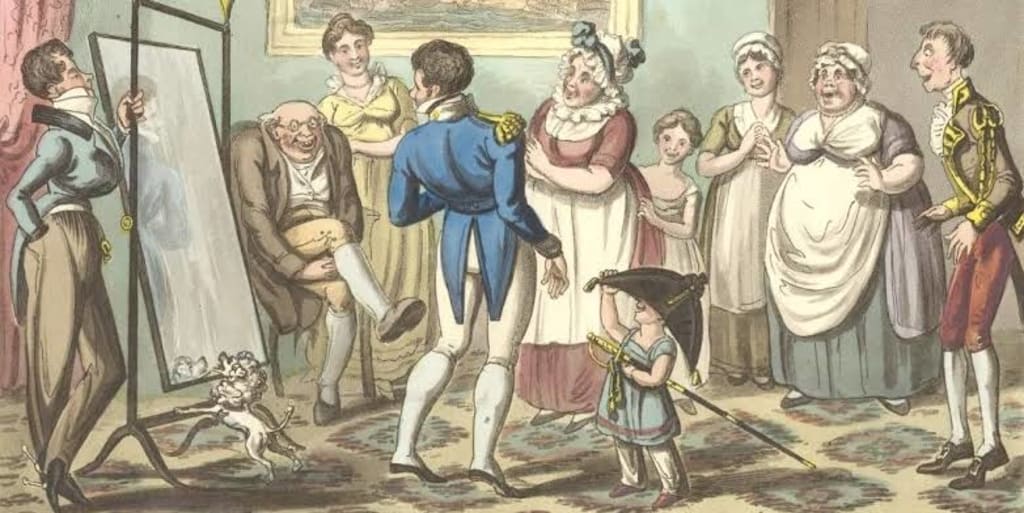Fashion in Jane Austen's Novels
"Exploring the Significance of Fashion as a Reflection of Society in Jane Austen's Novels"

Jane Austen, a renowned author of the 19th century, is famous for her portrayal of social norms and customs in her novels. One of the most prominent themes in her novels is fashion. The way people dressed in the Regency era, in which Austen lived, was an essential aspect of society's social hierarchy. Fashion was a statement of status, wealth, and class, and it was an important aspect of Austen's characters' lives.
In Austen's novels, we can see how the characters use fashion to express themselves and their status in society. For instance, in "Pride and Prejudice," the protagonist, Elizabeth Bennet, does not adhere to the strict social norms of the time. She does not follow the latest fashion trends and instead chooses to dress simply. Elizabeth's style of dressing sets her apart from her society's expectations and signifies her independence of mind and spirit.
On the other hand, characters like Caroline Bingley and Lady Catherine de Bourgh are shown to be excessively conscious of fashion trends. They dress lavishly and expensively, and their fashion choices reflect their social status and their desire to conform to the expectations of their class. The fashion choices of these characters also highlight the emphasis placed on social mobility in Regency society, as they strive to appear wealthier and more sophisticated than their peers.
In "Sense and Sensibility," the two main characters, Elinor and Marianne, have different approaches to fashion. Elinor is practical and sensible, and her clothing reflects this. She wears simple, elegant dresses that are appropriate for her social status. Marianne, on the other hand, is more emotional and impulsive, and her fashion choices reflect this. She wears bright, bold colors and extravagant fabrics, which indicate her romantic and passionate nature.
In "Emma," the titular character is shown to be fashionable and interested in the latest trends. She takes an active interest in dressing her friends, and her fashion advice is highly valued by the people around her. However, unlike Caroline Bingley and Lady Catherine de Bourgh, Emma's fashion choices are not driven by a desire to conform to social norms or impress others. Instead, her fashion sense reflects her creativity and her desire to express her individuality.
In conclusion, fashion is a crucial element in Jane Austen's novels. The fashion choices of the characters reflect their personalities, social status, and aspirations, and provide insight into the society in which Austen lived. Austen's portrayal of fashion emphasizes the importance of conformity and status in Regency society while also highlighting the value of individuality and independence.
Fashion in Austen's novels is not just limited to clothing. It also extends to other aspects of appearance, such as hairstyles and accessories. In "Northanger Abbey," Catherine Morland is described as having an "unaffected simplicity of dress and appearance," which sets her apart from the more fashionable and sophisticated characters. Catherine's simple hairstyles and lack of ornate jewelry reflect her innocence and naivety.
Similarly, in "Persuasion," Anne Elliot's plain appearance is contrasted with the more fashionable and ornate styles of her peers. Anne's modest dress and lack of adornments reflect her humility and self-effacing nature. However, as the novel progresses, Anne's fashion choices become more daring and expressive, reflecting her newfound confidence and assertiveness.
Overall, Austen's portrayal of fashion in her novels provides a fascinating insight into the social customs and expectations of Regency society. The characters' fashion choices reflect their personalities and social status, and their adherence or non-adherence to fashion trends is a statement of their individuality and independence. In this way, Austen's novels offer a nuanced and complex view of fashion that goes beyond mere superficiality and vanity. Instead, fashion is an important element of Austen's social commentary, providing insight into the complexities of Regency society and the human condition itself.






Comments
There are no comments for this story
Be the first to respond and start the conversation.